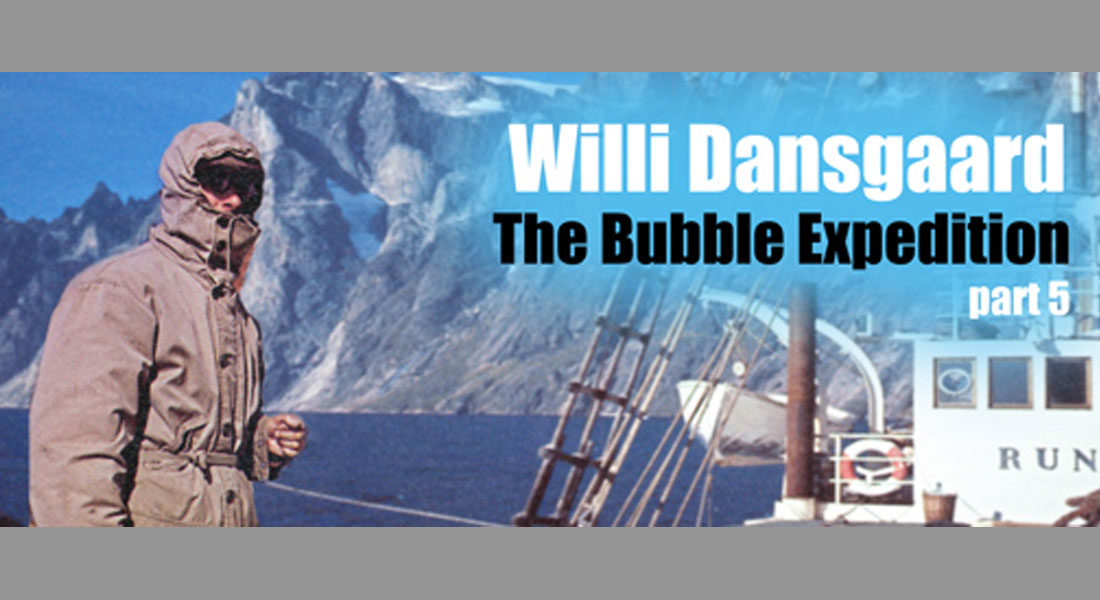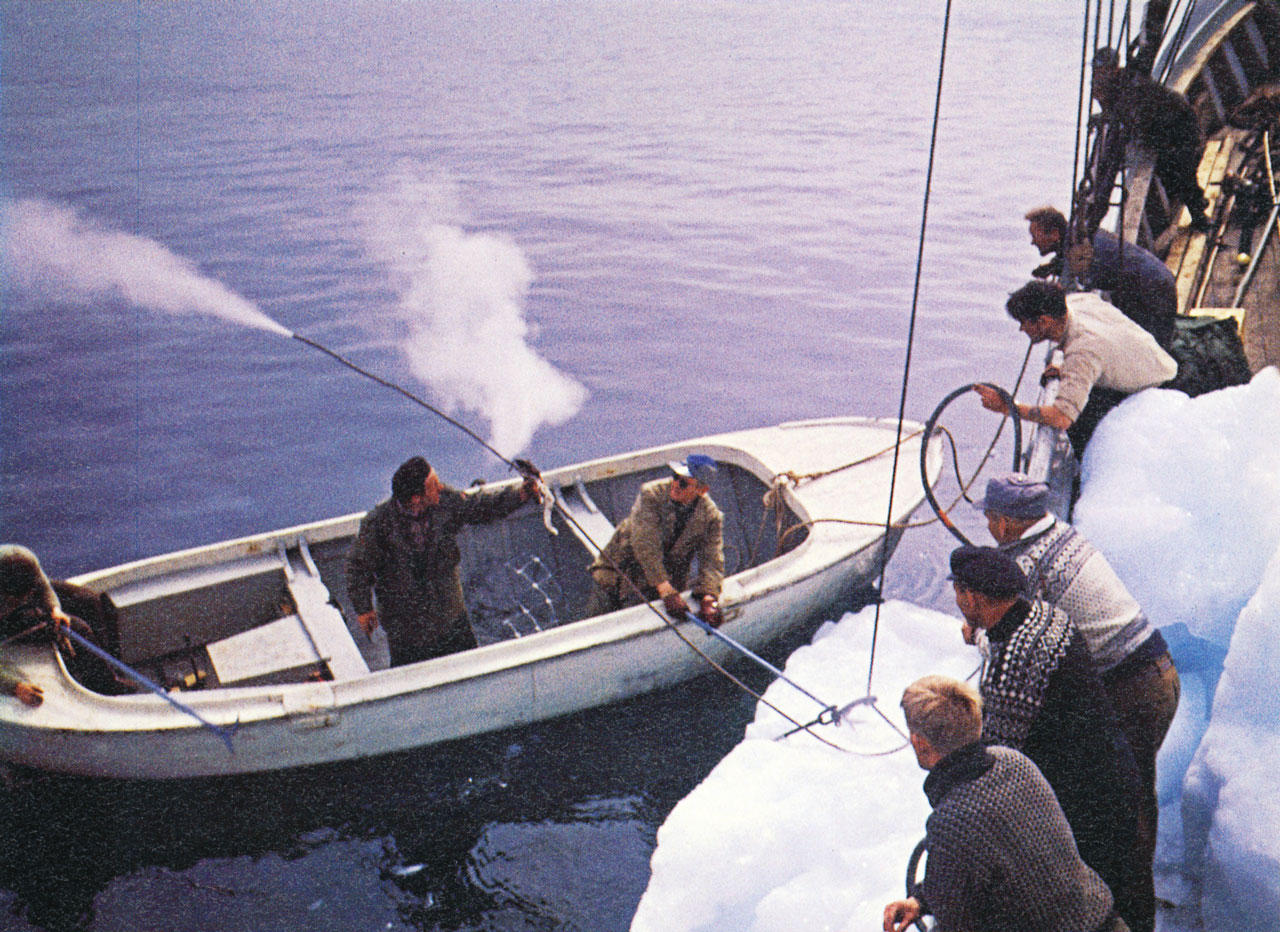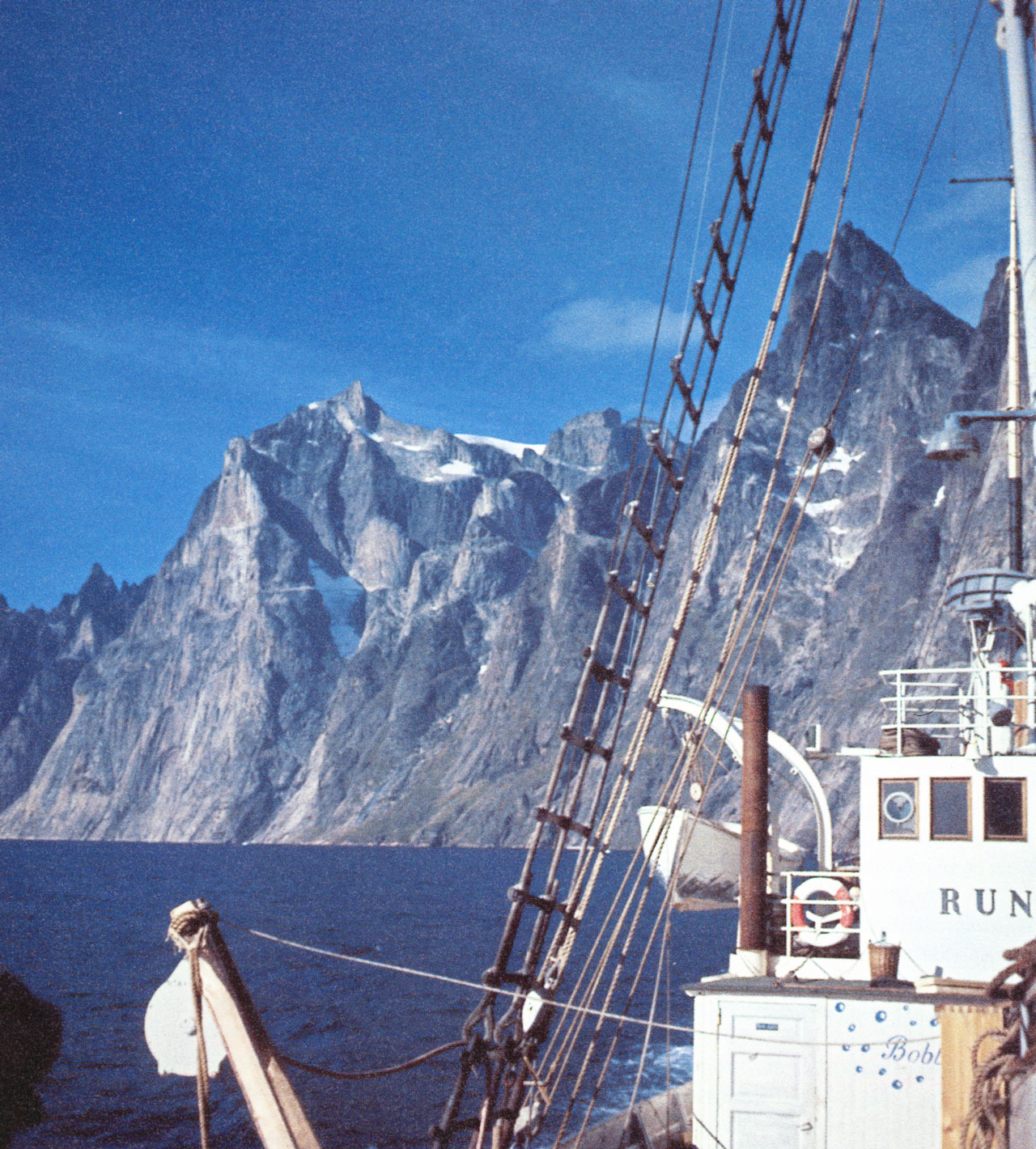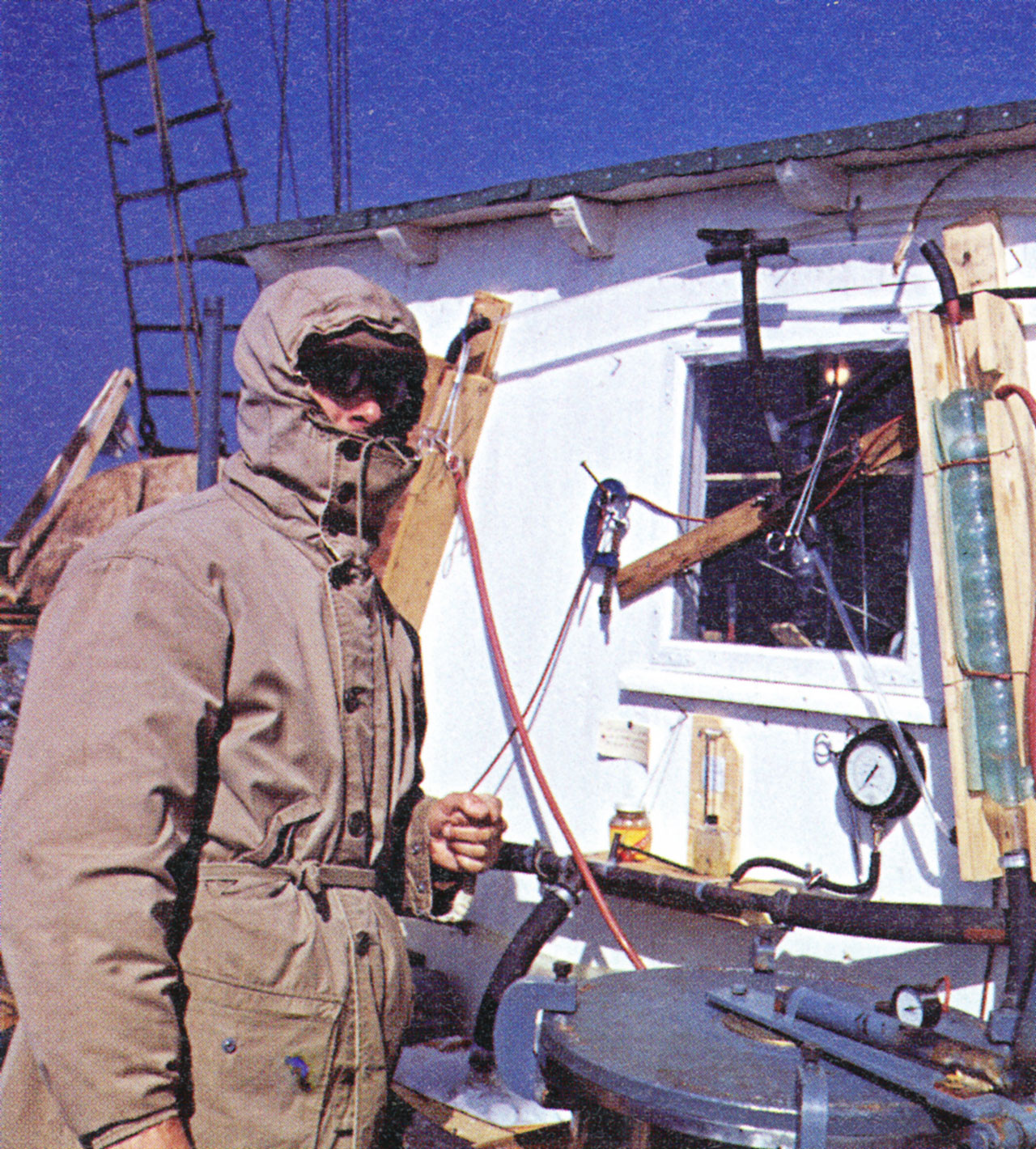The Bubble Expedition
On Whit Monday 1958, Willi Dansgaard leaves Inge in charge of their now two children and heads to Norway to board the fishing and sealing boat Rundøy. It will sail to Greenland and be used as an expedition ship in the so-called “Bubble Expedition” based on Pete Scholander’s idea for dating icebergs and this gives Dansgaard a good opportunity to use his isotope theory in practice on a specific problem.

Bubbles in the ice
The Bubble Expedition has three aims. First, they are to measure the composition of the old air, which they expect to find in the bubbles in the ice. Secondly, the air will be carbon-14 dated. Finally, Dansgaard will investigate the temperature at which the ice formed and thus discover where on the ice sheet it originated.
It is difficult to get a hold of the ice and finally they have to run the ship into the icebergs at full speed, while holding onto hats, glasses and fragile equipment. In other instances, they anchor themselves and wait for an iceberg to calve.
”But up came the ice and an ice pick completed the job of breaking it into pieces small enough to go into the melting pot,” says Dansgaard.
“When the container was voided of air, we melted the ice by passing hot steam through the copper pipes and the air escaping from the ice bubbles was passed through a sodium hydroxide solution, which captured the carbon dioxide,” he explains.

The expedition lasts three months and when they return home in August, they can begin to analyse the results, but then a catastrophe happens.
An accident with consequences
”I returned home from the Bubble Expedition with hundreds of melted ice samples in plastic bottles and there was a wild excitement to get them measured,” explains Dansgaard about his return. The mass spectrometer is immediately put to work and can process up to 20 water samples at a time. But Dansgaard accidentally puts the wrong liquid in the pump and it breaks – “the most idiotic move of my professional life,” he calls it.
Dansgaard’s accident cost him most of a year’s work and he is extremely annoyed. He therefore contacts the Biochemical Institute at Aarhus University, which owns a similar instrument and this marks the start of a busy period where he has to travel to Aarhus and carry out measurements every weekend.

”During the week, a new collection of samples would be prepared and Friday night I sailed with them to Aarhus. […] Most of Saturday was spent trimming the instrument and I measured the samples the following night and morning. […] The trip home to Copenhagen Sunday night was spent in a deep sleep,” he describes.
But the results from the expedition gradually emerge and for Pete Scholander they are actually a bit disappointing, as it turns out that the air in the ice bubbles cannot be said to represent past atmosphere. Dansgaard’s work, on the other hand, is crowned with success: “I was probably the one who got the most out of Pete’s Bubble Expedition professionally, […] but of course this spilled over into the entire undertaking, which all in all was characterised as a success,” he writes.
Dissertation and a new job
The new head of the Biophysical Laboratory, Jørgen Koch, is impressed with the amount of work Dansgaard is putting in and he encourages him to build on his existing articles and write a dissertation. It will include a section on the mass spectrometer, a reworked version of Dansgaard’s climatological articles from 1953 and 1954 and a review of Dansgaard’s results from the Bubble Expedition.
The title is: The isotopic composition of natural waters, with the subtitle with special reference to the Greenland ice cap.

When it is time for the dissertation to be defended, there is an unfortunate incident when one of the “official opponents”, Professor Lyshede, dies as a result of an accident and the defence is cancelled. ”It happened on October 25, 1960 and honestly, I wasn’t upset about the cancellation, because as mentioned earlier, oral discussion has never been my strong point,” explains Dansgaard.
Professor Lyshede comes from the Royal Veterinary and Agricultural University’s physics laboratory and when the position is opened, Dansgaard applies, even though he is not particularly interested in it.
When Jørgen Koch hears this, he rushes to apply to the Ministry of Education for an extraordinary professorship for Dansgaard at the Biophysical Laboratory.
”And so it happened that I did not get the position I applied for and didn’t want. Instead, on April 1, 1962, I got one that I wanted, but had not applied for,” he writes in his autobiography.
